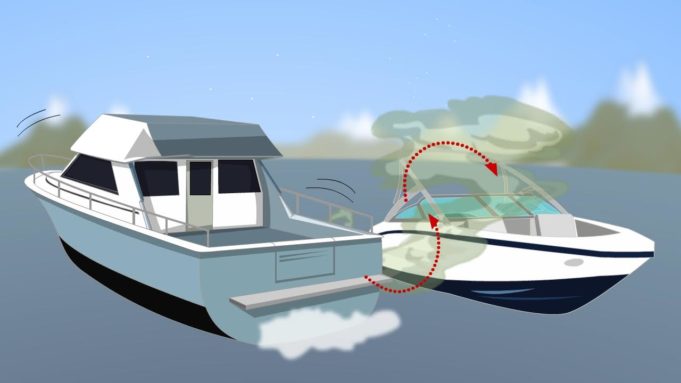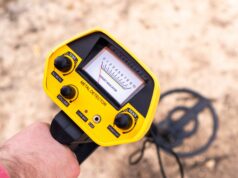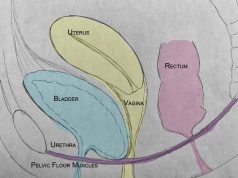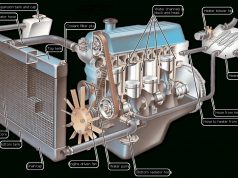Carbon monoxide (CO) is an odorless, colorless gas that can cause asphyxiation when a person is exposed to high enough concentrations. In northern climes, CO poisoning is most commonly thought of as a wintertime killer when faulty heating systems or bad decisions about trying to stay warm lead to inadvertent exposure to the toxic gas. CO poisoning occurring on pleasure watercraft just doesn’t seem possible, but it is.
How Can CO Levels Possibly Build Up in a Boat?
Because gasoline and other petroleum fuels do not burn completely efficiently, carbon monoxide is one of the products of combustion. If you are on a houseboat make certain that the engine vents are not near to the openings into the contained quarters. When windspeeds are low avoid idling alongside another boat that is also idling its motor. Try to avoid riding for extended periods with the boat at a high bow angle, as eddy currents and backdrafts can force the engine exhaust forward into the passenger spaces.
Why is CO dangerous?
Hemoglobin inside of the red blood cells is the major carrier of oxygen (O2) in the bloodstream. It is also the same molecule that takes carbon dioxide (CO2) away from the tissues and carries it to the lungs so that it can be breathed off. This works so well in the body because of the chemistry of the hemoglobin molecules. When red blood cells are in the lungs, where oxygen levels are high, oxygen readily loads onto the hemoglobin. When oxygen levels are lower, as they are in the tissues of the body, oxygen comes off of the hemoglobin and is generally replaced by carbon dioxide, generated by normal metabolism.
The big problem with carbon monoxide and hemoglobin is due to something that is known as the binding affinity. Carbon monoxide binds to hemoglobin in red blood cells approximately 240 times better than does oxygen. So even if oxygen levels are okay, even a little carbon monoxide can out-compete oxygen for binding to the hemoglobin molecules in the red blood cells. And if enough carbon monoxide can bind, real trouble begins.
Signs of CO Poisoning
Someone exposed to elevated levels of carbon monoxide may display a number of different symptoms. These include: lethargy, headache, confusion, dizziness, weakness, nausea and vomiting. If levels of CO get too high, unconsciousness and death can occur. So, be careful out on the water and pay attention to the boats around you as well as how your boat motor vents exhaust, it could save your life.
To read more about safety concerning carbon monoxide, visit these pages at the US Centers for Disease Control and Prevention.



















